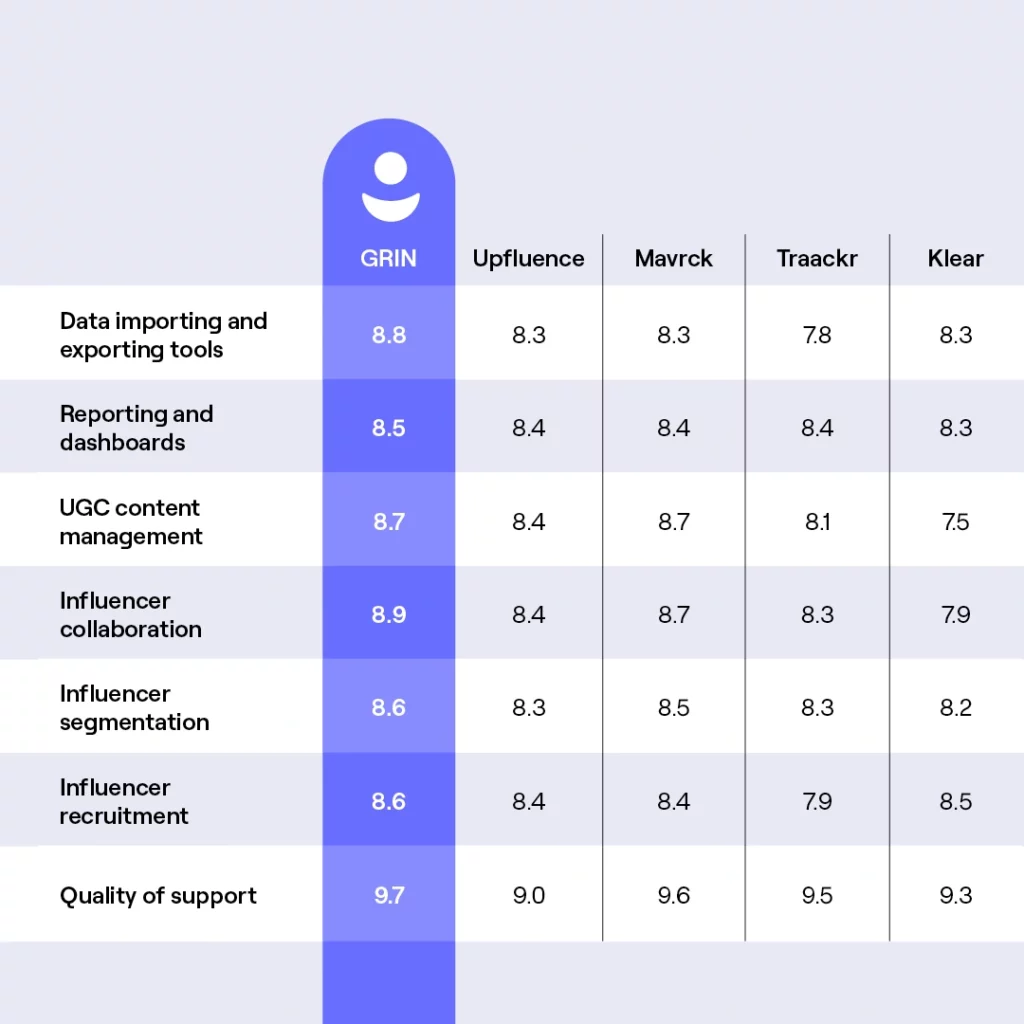Reading Time: 17 Minutes
Managing an influencer marketing program can seem easy in the beginning. The truth is, all you really need is a spreadsheet and an email account to start your journey.
But eventually, every brand hits a wall where they can no longer grow with a manual approach. And to break through, you’ll need a platform that can automate busy work and free up time so you can focus on big-picture goals.
So how do you know if you are ready to justify purchasing influencer marketing tools? And what exactly should the right platform include?
Let’s start from the top.
Some brands jump into a SaaS purchase much too soon without knowing exactly what they need or how they will implement the tool into their process. Other brands wait too long, and as a result, they lose prized creator relationships and exhaust their marketing team.
To avoid a premature purchase or team member burnout, we recommend taking a closer look at your current program. To help you determine where you are, we’ve broken influencer programs into three stages.
You’re beginning to reach out to influencers in the early stage and may have only run a few campaigns. Because your program is so new, you’re not completely sure what you need to scale your program.
Basically, you’re just figuring it out. And that’s a great place to be. At this point, you can develop some healthy habits needed to manage your budding influencer community properly.
You probably don’t need to purchase a complete platform yet. But here are some manual tools you’ll need to get started:
By mid-stage, you’ve run several successful influencer campaigns, and you have a handful of top performers that you intend to use again. The main problem you’re having at this stage is figuring out how to keep track of all the details.
You have a pretty good idea of what you need to run a successful influencer program. You can “see the light,” but you need a better tech stack to get you there. Now is the perfect time to invest in an influencer marketing platform that automates most of the tasks mentioned above.

If you’re running a full-fledged influencer program, you likely have a creator management platform everyone on your team uses to recruit influencers, manage campaigns/workflows, report performance, and maintain a creator content library.
But at this stage, you can refine your program. That might mean that you need a better influencer platform or supporting tools. Or, it could mean that you recognize the need to dial in your influencer selection.
When considering a creator management platform, it’s important to determine what your current influencer program looks like today and where you hope to take your program in the near future.
Early on, you’ll probably be using spreadsheets, tools within each social platform, and other low-cost tools at your disposal. But eventually, you’ll need a better solution—one that accomplishes more in fewer clicks and does a better job of integrating with your entire marketing tech stack.
Your chief influencer marketing tool is whatever platform you use to manage your influencer relationships and campaigns. Whether using manual tools (spreadsheets) or automation (creator management platform, IRM software, etc.), what you hope is that your management support will help you achieve the following:
Though your creator discovery and recruitment tools may come included within your influencer management support, this task is critical enough to merit a separate discussion.
The quality of your influencer program comes down to the quality of influencers you partner with. Many marketers lean heavily on a combination of tools to achieve the following:
Launching an influencer marketing campaign requires various workflow and project management tools. Keeping your campaigns organized from start to finish requires you to identify tools that will:
When your creators post for a campaign, you’ll need a system for downloading, saving, or taking a screenshot of each post. Within your content library, you can confirm that your influencers are posting as agreed. You can also use that library to repurpose high-performing influencer content for paid ads.
In this day and age, it’s unfeasible to manage paper contracts with your influencers. Instead, you’ll need a process for sending, negotiating, and signing influencer agreements that holds everyone accountable for what you expect from your influencers and how you will compensate them.
Whatever ecommerce platform you’ve chosen for your brand, you’ll need to integrate inventory, selling, and fulfillment with your influencer campaigns. This is especially true if you plan to utilize various social commerce tools, such as in-app shopping.
Maintaining open communication with your influencers before and during your campaigns is critical. And if you’re using a reliable email provider attached to your domain (like G Suite or Outlook), you’ll have many communication tools at your disposal.
Depending on your program size, you may have too many influencers to email individually for every task in every campaign.
As your program grows, consider adding a tool that allows you to:
Your influencer program exists as a piece of your greater marketing strategy. As such, you’ll need to coordinate your creator collaborations with other campaigns, such as product launches, experiential marketing events, holiday promotions, and more.
A great addition to your influencer marketing technology list is project management or productivity tools that make it easier for you and your team to oversee workflow, timelines, and milestones.
Performance tracking and reporting demonstrate to you and your leadership that your influencer program is working. When your program is young, pulling key metrics from multiple spreadsheets and manually calculating ROI is understandable. But once you’re overseeing numerous campaigns and a handful of influencers, you will need a tool to gather your performance metrics.
Ideally, you want your reporting tool to track:
Manual influencer marketing tools are any free, pre-existing, or general tools you use to get the job done. For new influencer programs, manual tools make the most sense.
Naturally, this approach requires gathering, storing, organizing, and retrieving information from a few different places. But if you don’t have too much data to work with just yet, you’ll be able to launch your program with few issues.
Once you’re managing a handful of influencers you plan to collaborate with repeatedly, the manual approach won’t suffice (unless you hire a couple of new team members to help you keep track of everything).
An automated approach means you’re looking to consolidate your influencer/campaign data into one place and do far more in fewer clicks. Using a creator management platform also adds credibility to your program since your creators will notice that you are running campaigns using better tools.
When shopping for a platform, its tools must meet your needs, like automatically pulling data you formerly had to scour for on social media channels or gathering performance metrics into an easy-to-use ROI report.
Remember: It’s important not to take your new creator management platform decision lightly. Choosing the wrong platform could impede your brand’s growth and cost you more money in the long run.
GRIN’s end-to-end Creator Management platform is consistently rated the top influencer marketing software on the market. With all the capabilities needed to own your relationships with content creators and generate ROI at every stage of the marketing funnel, GRIN is a top choice for brands looking to take full advantage of today’s creator economy.
Additionally, GRIN’s customer support team walks new users through the onboarding process to limit the learning curve associated with using a new platform. All GRIN users also gain access to the GRIN Community, where they can share tips and insights with like-minded marketers and join exclusive training and webinar sessions with the GRIN team.
Here is a look at how GRIN’s Creator Management platform compares to the competition, according to G2:

When starting your influencer marketing journey, you might only need simple technology to run your program, like a Google Sheet, branded email account, and native tools found in each social media platform. You could also use GRIN’s free Web Extension to help find the perfect creators for your program.
As you scale your program, you’ll also want a way to organize your prospects and streamline outreach.
No matter the stage of your program, ask yourself the following questions before reaching out to a recruit:
Like any other investment, you’ll need to do some research before deciding on the right creator management platform to help you reach your goals. Take your time with the decision, and make sure to pick the one that will strengthen your relationships with creators and help turn your brand into a household name.
To see how GRIN’s top-ranked Creator Management platform can help get you there, book some time to discuss your goals with a member of our team today.
Learn more about influencer marketing: Influencer Marketing 101
Our team keeps a finger on the pulse, so you’re always working with the latest information.